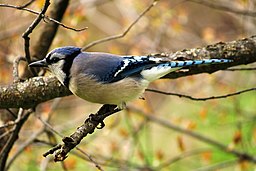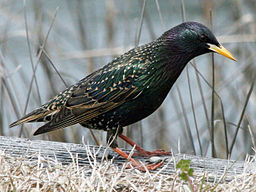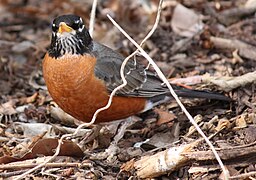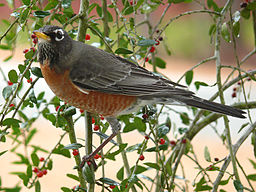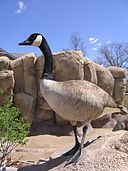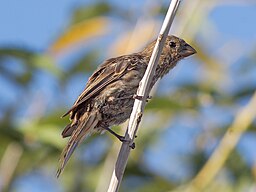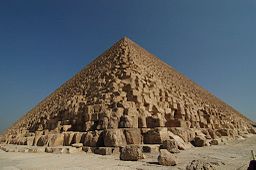US vs. EU
Lets for a moment assume that the United States do not function as one country but are somewhat similar
to the European Union. In such a case we could compare the individual states of the US as independent countries to members of the EU. We will do the comparison to have a rough estimate of quality of
economies of individual states, if they were to function as independent countries.
How to estimate who is important? We will take a Gross Domestic Product (GDP) as a main and the only indicator. We will take the GDP of individual states of the US and calculate what fraction of the total US GDP they are. The same procedure we will apply to the European Union. This will give us an estimate of how important is the economy of that state/EU member for the total GDP of the US or EU. Why not just look at the total numbers? It would give us the same information, however, fractions are easier to look at.
Who is who? To roughly compare states to countries we will look at the individual GDP numbers. We will restrict the list to 10 richest states from the US. The direct match of the GDPs is not possible, therefore we will choose country with GDP closest to a given state, possibly rounding in favor of the state.
The United States
On the picture bellow, we present contribution of the states economies to the total GDP of the US. 10 states that contribute the most, are California, Texas, New York, Florida, Illinois, Pennsylvania, New Jersey, Ohio, Virginia and North Carolina, and give together a bit more than 50% of the total US GDP. Other half divides among the other 40 states. California has significantly higher GDP that any other states and is only slightly smaller than sum of the GDPs of Texas and New York together. Although we restrict our list to 10 states, the last state from our list (North Carolina) has very similar GDP contribution as few following states (Georgia, Massachusetts, Michigan).
 |
| The Unites States GDP for individual states as a contribution to the total US GDP. Fraction of the total US GDP per state was taken from Wikipedia and refers to 2010. |
European Union
 |
| GDP of the European Union divided into member countries. Data taken from World Bank. |
Similar comparison for members of the European Union shows that first ten largest contributors sum up to more than 75% of the total GDP of EU. From 27 member countries the first 10 are Germany, France, United Kingdom, Italy, Spain, Netherlands, Poland, Belgium, Sweden and Austria.
Germany and France together contribute in approximately 1/3 of the total GDP. Including in that list the UK, the total contribution of the three countries is approximately 50% of the total EUs GDP. On the other side, Germany contribute to the EU GDPs approximately the same as 17 counties (whole EU not including 10 countries mentioned before).
Germany and France together contribute in approximately 1/3 of the total GDP. Including in that list the UK, the total contribution of the three countries is approximately 50% of the total EUs GDP. On the other side, Germany contribute to the EU GDPs approximately the same as 17 counties (whole EU not including 10 countries mentioned before).
Who is who
To summarize first 10 highest contributors to the total US and EU GDPs in the table below
we list 10 US states and 10 EU countries along with their GDP (in Million US dollars).
| The United States | European Union | ||||
| US # | US State |
GDP
(Millions USD) |
EU # | Country |
GDP
(Millions USD) |
| 1 | California | 1,936,400 | 1 | Germany | 3,280,530 |
| 2 | Texas | 1,207,432 | 2 | France | 2,560,002 |
| 3 | New York | 1,156,500 | 3 | UK | 2,261,713 |
| 4 | Florida | 754,000 | 4 | Italy | 2,060,965 |
| 5 | Illinois | 644,200 | 5 | Spain | 1,407,405 |
| 6 | Pennsylvania | 575,600 | 6 | Netherlands | 779,356 |
| 7 | New Jersey | 497,000 | 7 | Poland | 469,440 |
| 8 | Ohio | 483,400 | 8 | Belgium | 469,374 |
| 9 | Virginia | 427,700 | 9 | Sweden | 458,551 |
| 10 | North Carolina | 407,400 | 10 | Austria | 379,069 |
Let us try to select one or combination of counties that economy (in terms of GDP) are roughly representing the GDP of a given US state. The largest EU countries must however stay off the comparison, the first EU country that approximately has the same GDP as California is Italy (the fourth EU economy). Below we compare the first 10 US states to EU countries.
| US # | US State | EU Country |
| 1 | California | Italy |
| 2 | Texas | Spain |
| 3 | New York | Spain |
| 4 | Florida | Netherlands |
| 5 | Illinois | Netherlands |
| 6 | Pennsylvania | Poland + Hungary (598,071 Million USD) |
| 7 | New Jersey | Austria + Hungary (507,700 Million USD) |
| 8 | Ohio | Austria + Hungary |
| 9 | Virginia | Poland |
| 10 | North Carolina | Sweden |
Summarizing the comparison, California being an independent country would correspond in the strength of its economy to Italy. Texas and New York, both approximately match Spain. Florida and Illinois match GDP of Netherlands. For Pennsylvania, New Jersey and Ohio we combined two
EU countries to slightly overestimate the GDP of the states and assigned them to economies of Poland and Hungary for Pennsylvania and Austria and Hungary for both New Jersey and Ohio. The last two of the first 10 US states, Virginia and North Carolina, approximately correspond to economies of Poland and Sweden respectively. The comparison is of course very approximate.



